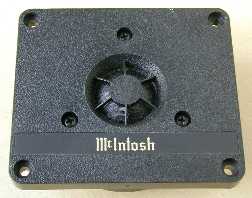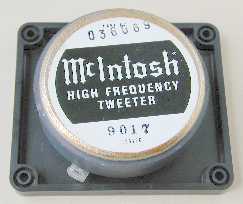Originally Posted By: BrocLuno
OK, I have been a supporter and a contributor to AudioKarma for a couple of decades, I guess ... Back in the early 1970's I worked for GRT/Chess/Janus Records (and Tapes) as a technician. I've been in this game for a while

Mostly I hang out in the Turntable Forum because that's where folks chat about playing records (LP's, 45's, Shellac's, etc.). What we collectively have come to realize is that there are really three parts to the vinyl equation.
Part one is the TT. You have experienced that a bit. The job of the TT is to spin the record at the appropriate speed w/o variation, not add any platter harmonics, and support the tone arm. Many think the tone arm should be discussed as integral with the TT, but that is not necessarily so...
The second part of the vinyl equation is the cartridge. Or, more specifically the stylus. The stylus may have the biggest role in digging all the "data" out of a groove ... But, it can also have a huge effect by dredging up old bottom dirt, cigarette tars, dust bunny's, etc. AND, it can have a huge effect on sound in its own right (bright, mellow, dull, etc.). The suspension can have a great deal to do with tracking and the like...
The third part of the equation is the phono stage, or phono amp. If you are running a receiver, it's likely built in. But in actual A-B testing by me and lots of others among all sorts of built-in and external phono stages, it can be proven that there is a another huge difference to be had here. No matter how much signal/data gets extracted from the groove, some will be lost in the phono stage. It's just the nature of electronics. Tiny signal, big amplification factor, something will get stepped on. Could be the highs, could be the bass, prolly will be the detail and nuance.
So we roughly break these three areas into equal cost regions. Just like BITOG'ers, there is endless discussion about what is most important. Most agree, it's the vinyl mastering and pressing, then catridge/stylus, then phono stage, then TT.
You can get an amazing amount of music out of a modest TT with a good cartridge/stylus (that works well with the tone arm on hand ...), and a pretty decent phono stage. Of course, you can get more out of a top dollar rig. But the value return curve starts to flatten out pretty significantly at around roughly $300 for each element.
If anyone is interested, I can supply a pretty good discussion of all this in the Phono Stage A-B Comparo Doc I compiled a few years back. Lots of tricks, hints and background info for anyone pursuing a vinyl hobby. Just PM me with a real outside email address, and I'll send it along.
What are your thoughts on a PS Audio pre-amp with phono stage? As I mentioned in the OP, I'm just using the integrated one in my DENON receiver, which is a good receiver, but I think the PS Audio piece may have actually been more expensive.
OK, I have been a supporter and a contributor to AudioKarma for a couple of decades, I guess ... Back in the early 1970's I worked for GRT/Chess/Janus Records (and Tapes) as a technician. I've been in this game for a while

Mostly I hang out in the Turntable Forum because that's where folks chat about playing records (LP's, 45's, Shellac's, etc.). What we collectively have come to realize is that there are really three parts to the vinyl equation.
Part one is the TT. You have experienced that a bit. The job of the TT is to spin the record at the appropriate speed w/o variation, not add any platter harmonics, and support the tone arm. Many think the tone arm should be discussed as integral with the TT, but that is not necessarily so...
The second part of the vinyl equation is the cartridge. Or, more specifically the stylus. The stylus may have the biggest role in digging all the "data" out of a groove ... But, it can also have a huge effect by dredging up old bottom dirt, cigarette tars, dust bunny's, etc. AND, it can have a huge effect on sound in its own right (bright, mellow, dull, etc.). The suspension can have a great deal to do with tracking and the like...
The third part of the equation is the phono stage, or phono amp. If you are running a receiver, it's likely built in. But in actual A-B testing by me and lots of others among all sorts of built-in and external phono stages, it can be proven that there is a another huge difference to be had here. No matter how much signal/data gets extracted from the groove, some will be lost in the phono stage. It's just the nature of electronics. Tiny signal, big amplification factor, something will get stepped on. Could be the highs, could be the bass, prolly will be the detail and nuance.
So we roughly break these three areas into equal cost regions. Just like BITOG'ers, there is endless discussion about what is most important. Most agree, it's the vinyl mastering and pressing, then catridge/stylus, then phono stage, then TT.
You can get an amazing amount of music out of a modest TT with a good cartridge/stylus (that works well with the tone arm on hand ...), and a pretty decent phono stage. Of course, you can get more out of a top dollar rig. But the value return curve starts to flatten out pretty significantly at around roughly $300 for each element.
If anyone is interested, I can supply a pretty good discussion of all this in the Phono Stage A-B Comparo Doc I compiled a few years back. Lots of tricks, hints and background info for anyone pursuing a vinyl hobby. Just PM me with a real outside email address, and I'll send it along.
What are your thoughts on a PS Audio pre-amp with phono stage? As I mentioned in the OP, I'm just using the integrated one in my DENON receiver, which is a good receiver, but I think the PS Audio piece may have actually been more expensive.







